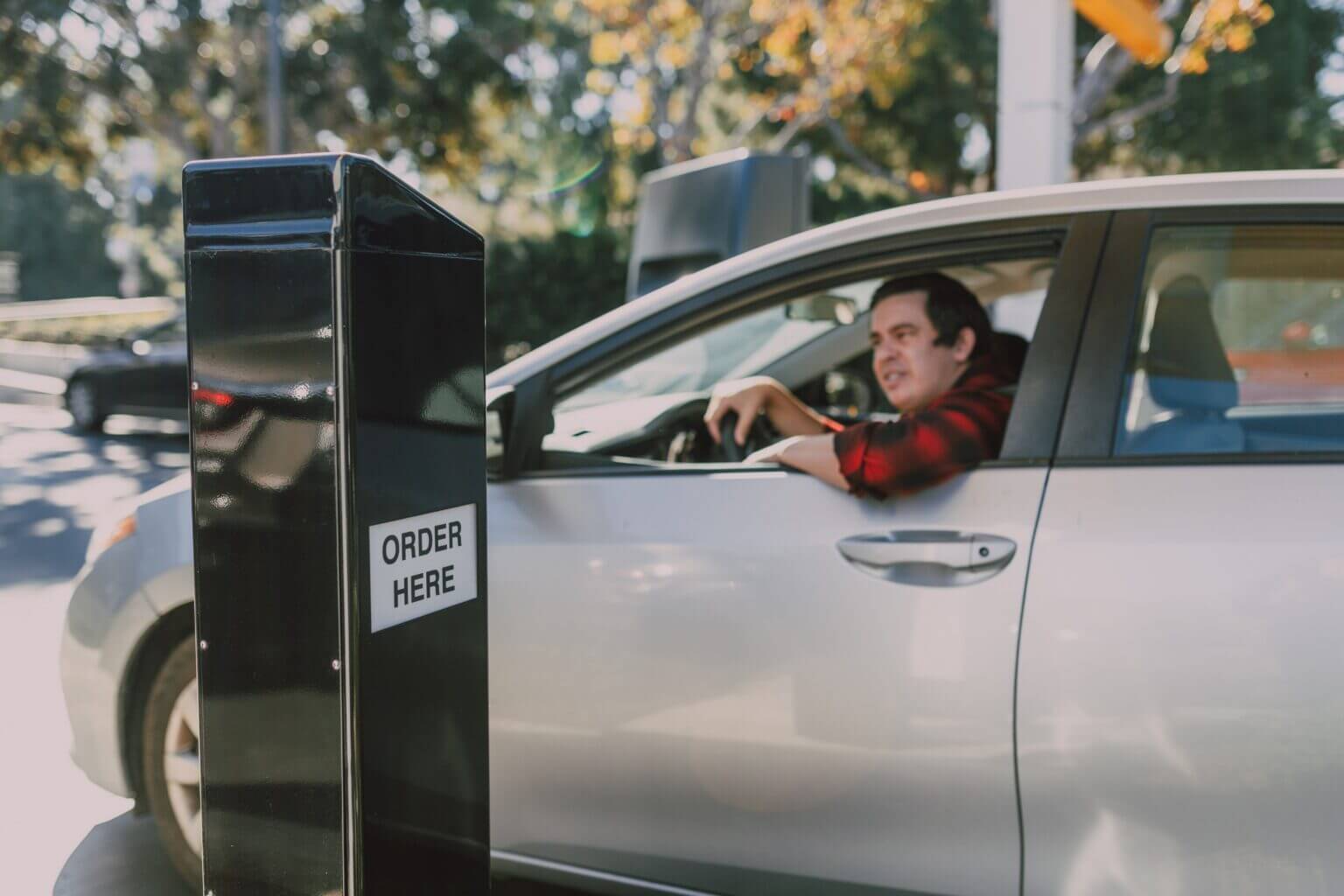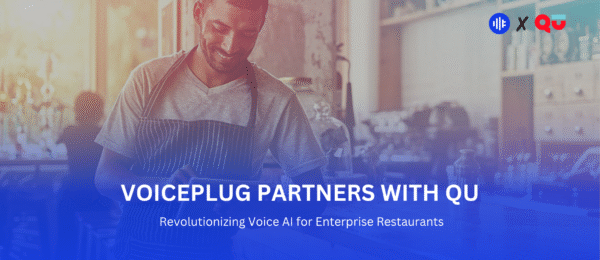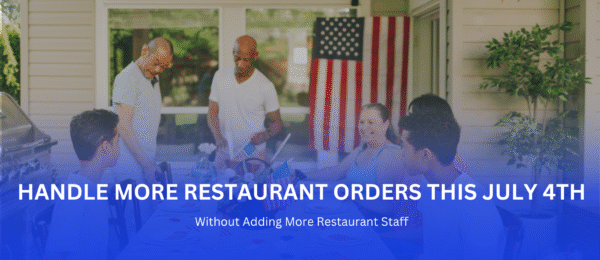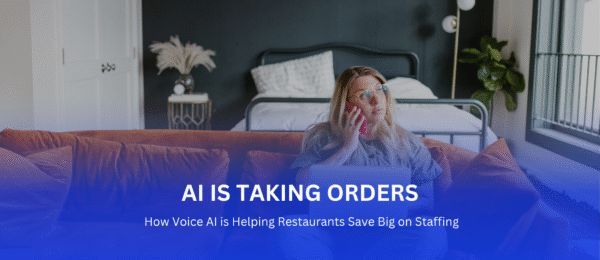VoicePlug’s conversational AI now integrated with Qu to enable intuitive voice ordering across phones and drive-thrus.Palo Alto, CA…
Learn More
How AI-Powered Ordering is Changing the AI Drive Thru Industry?
Technology is always inventing new ways to make our lives easier. With more and more people determined to keep moving, the AI Drive Thru is becoming more important than ever in the fast-paced world we live in. With customers banging at your doors for food on the go, it’s even more critical that you’ve thought about what your customers want when they pull up to your restaurant. The good news is that by trying AI-enabled ordering technology, you can stay on top of customer wants quickly and seamlessly!
Factors for AI Drive Thru success
The goal of AI-powered food ordering is to fully automate the content creation process – based on certain criteria in your database without human intervention. AI is the future of food ordering in restaurants. The best AI Drive Thru Restaurants are using it to automate complex tasks, reduce wait times, and provide better customer service.
One of how AI has found its way into ordering systems is through order prediction. The process is straightforward: data about customer behavior, order history, and so on are used to generate predictions about what a customer will buy next.
More automation is welcomed by customers. According to Deloitte, the vast majority (81 percent) would order from a drive-thru automated voice system. The number of people who would be willing to have their food delivered by a robot or drone has increased by 10% since last year. And 54% would be comfortable ordering from a partially or fully automated kitchen. Most of these technologies are still in their early stages, but there is a market for them. The drive-thru aided QSRs’ survival during the pandemic,
Increase Order Value
Artificial intelligence-powered food ordering technology, especially for the Drive Thru Order System has the potential to increase customer orders by 20%. This is because customers are more likely to order more items when they can do so on their own.
Cost Savings
AI-powered food ordering will reduce costs in the long run. This is because it will reduce the time employees spend on inventory and product placement. Not only is there increased revenue when using AI, but it will also reduce the time and cost of operating the business. This will make it easier to scale the business with less cost when trying to do so. A company won’t have to depend on any human workers either, since all they would need is a computer system that connects your drive-thru with a POS system.
Customer Experience
Artificial intelligence-powered Food Ordering System are the latest in the line of artificial intelligence technology, which is already used in smart cars, robotic teaching assistants, and many other areas. These food ordering systems can provide better customer service than humans because they’re connected to databases that contain the food requirements for thousands of customers. A human server may not know your choices, but an AI system will use an algorithm to compile a list of dishes you love.
Reduce wait times
We love convenience. The less time we must spend on something, the better. Therefore, e bot-powered food ordering is a good idea for restaurants and eateries. A great example of this would be in East Asian countries where there are a lot of people that want to order food from their phone but don’t know how to use it. By adding AI technology, these individuals can order from their phones without any help from a service member. When it comes down to it, the end goal for businesses is customer satisfaction, and AI-powered food ordering can do just that.
Boost your sales and profitability.
This is a very powerful, inexpensive, and available resource. If you want to increase your sales and your profitability, you will have to consider this technology as part of your marketing global plan. The objective of AI-powered content creation is to completely automate the process of article creation – do actions based on certain criteria in your database without human intervention.
A flawless point-of-sale integration
Two-way communication with the restaurant POS is essential to transmit orders and comprehend when items are out of stock.
What does the future hold?
Self-service ordering kiosks, digital menu boards with real-time information, and robotic transporters that transport your meal to you could be the future of the drive-thru lane. These machines will be able to monitor food temperatures, alert customers to allergens, and perform other tasks that humans currently perform. Because of this automation, businesses will be able to compete on the quality of their food rather than just the price. Voice-only interfaces are becoming commonplace.
VOICEplug AI’s artificial intelligence voice assistant automates speech recognition in restaurants and can also be used in drive-thrus and kiosks. VOICEplug AI claims to have a 95 percent accuracy rate and to increase labor productivity by up to three times. Customers may be greeted by their names, orders can be taken, orders can be transferred to POS systems, and other operations can be performed using conversational AI technology.
In a recent study, it was discovered that the voice AI assistant was 98 percent accurate in taking drive-thru orders and didn’t require restaurant employees to interfere. Even varied consumer accents were handled by the system. The emergence of Drive Through Ordering System is being fueled by several factors. The first is the Covid-19 pandemic, which has led to an increase in customers using drive-thrus rather than eating inside restaurants due to concerns about being infected with the virus.
According to a survey conducted by the National Restaurant Association, 78 percent of restaurant owners do not have enough personnel, and 61 percent of fast-food businesses have shuttered their dining rooms due to a lack of labor.
Restaurants and QSRs are turning to artificial intelligence (AI) to solve problems such as long wait times, blunders, and labor shortages. However, even if it is simply in the Drive Thru AI, there are concerns about replacing human workers with bots. Some restaurants are beginning to see AI as a requirement and an opportunity for humans and machines to work together rather than compete.
Articles you might like
Nearly 83% of consumers bought food to celebrate the 4th of July in 2024, based on a sentiment…
Learn More“We have more calls nowadays because people find it easier to place their orders. I think that’s the…
Learn More



